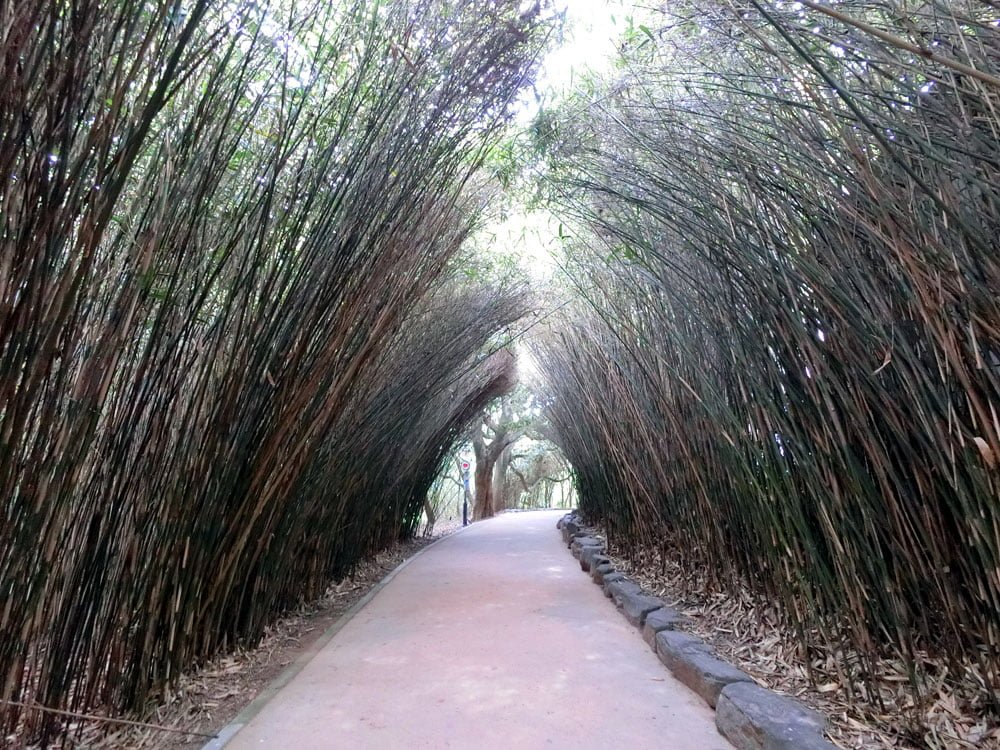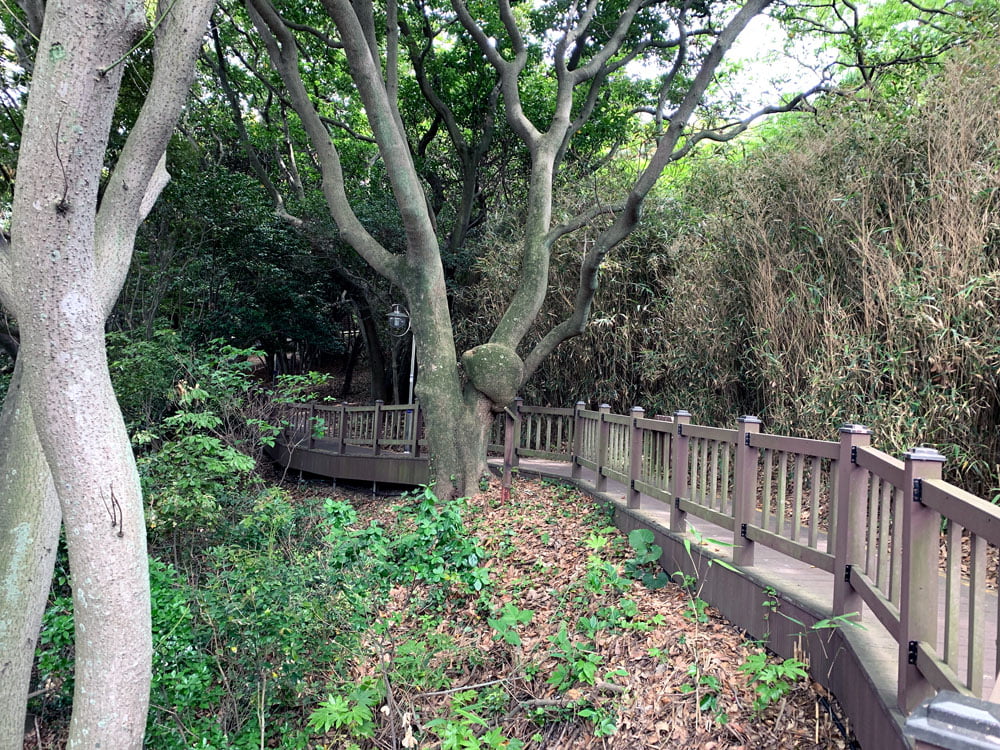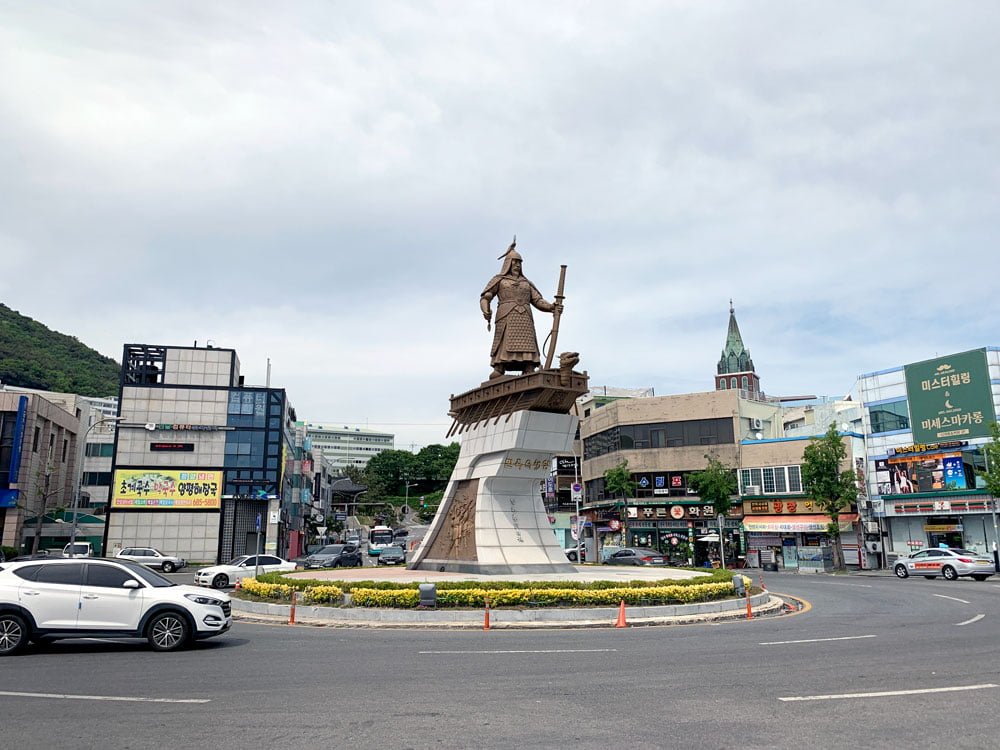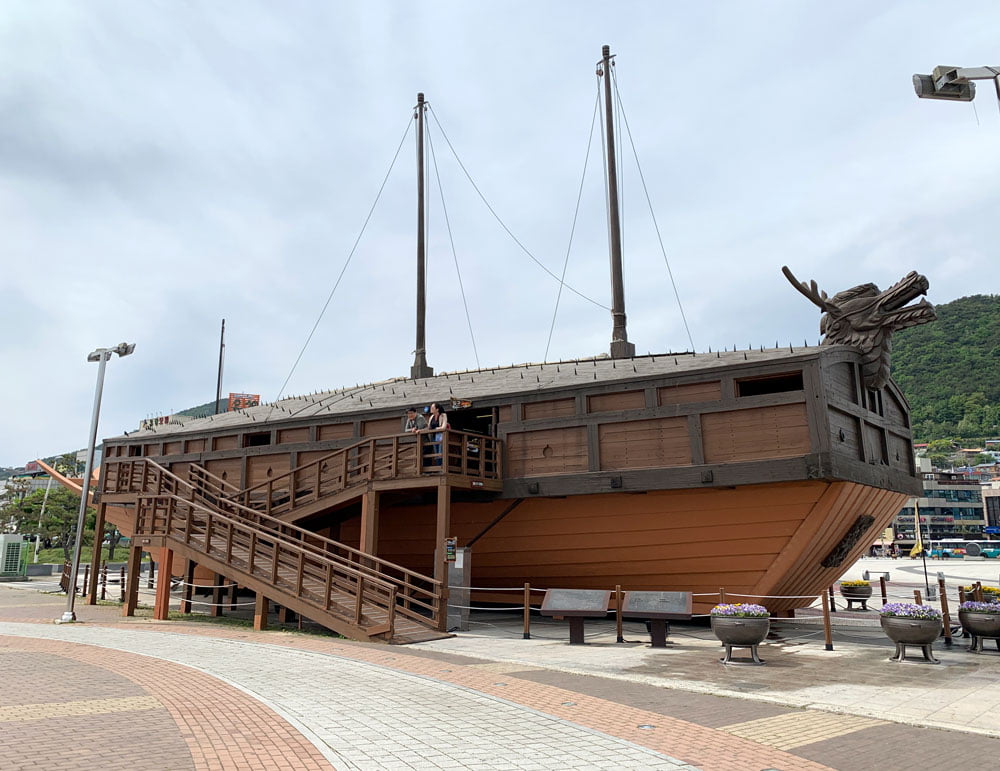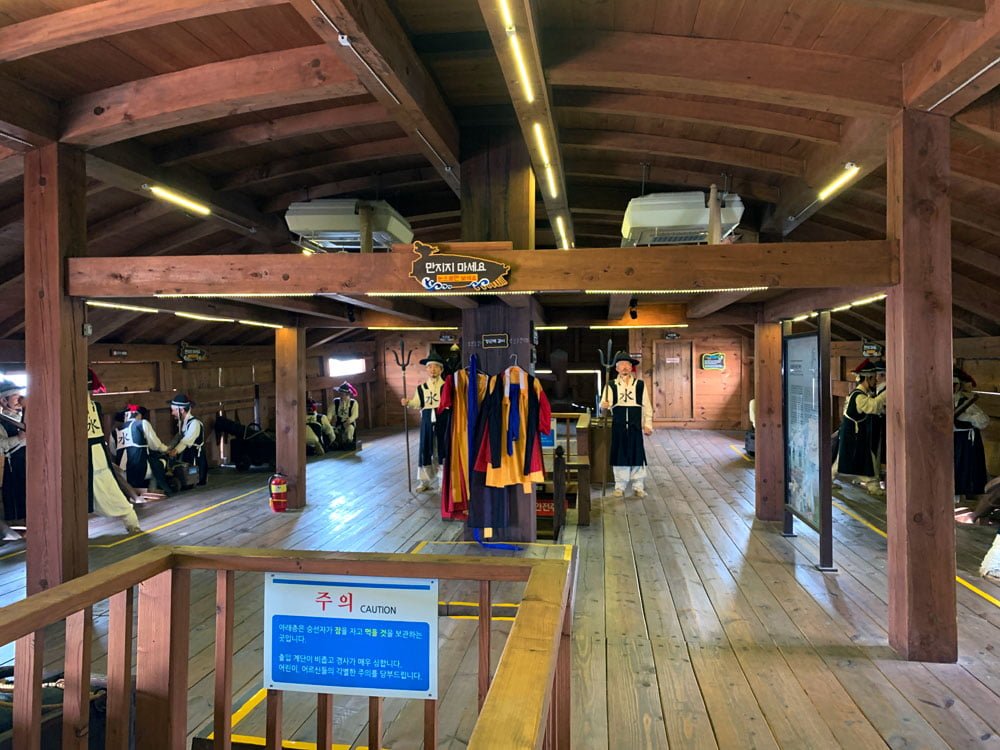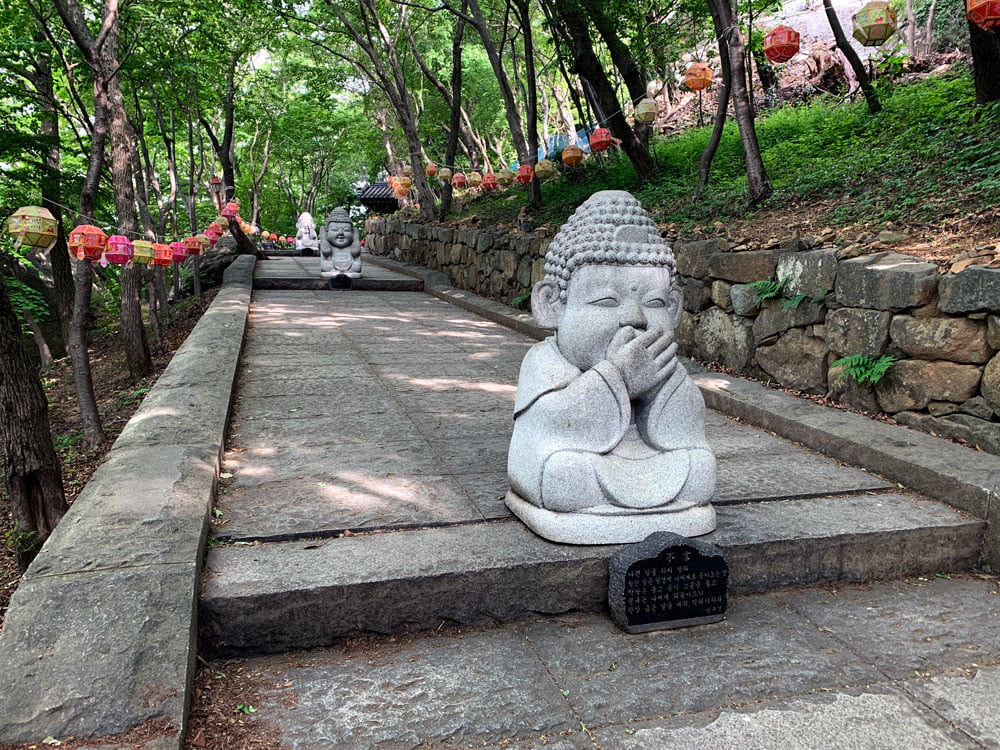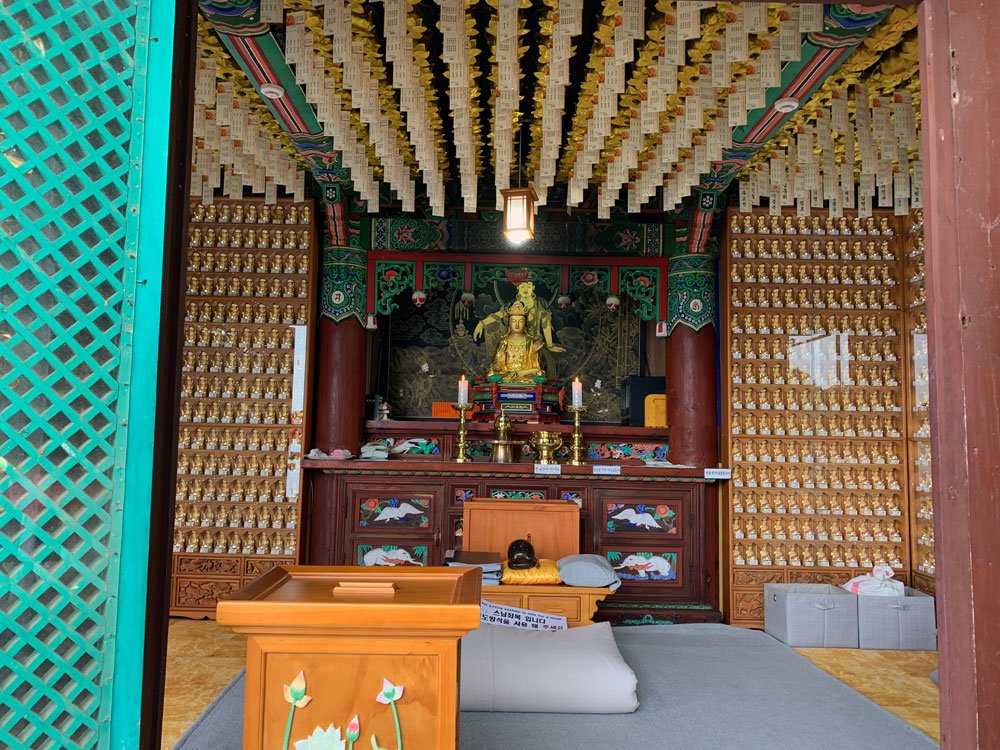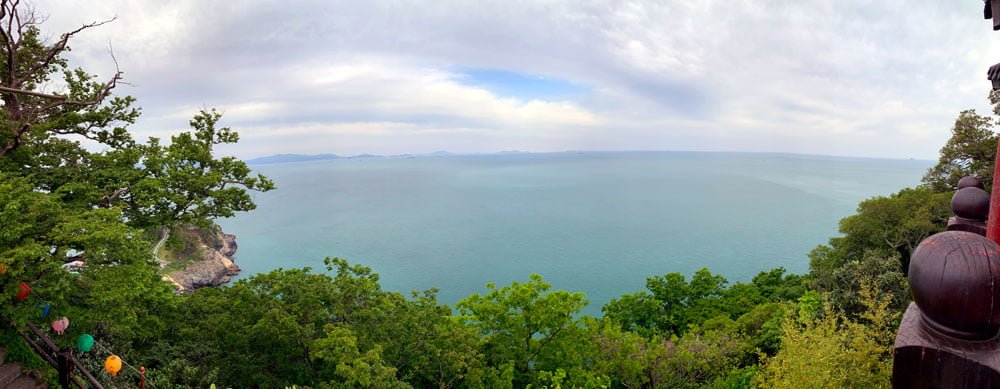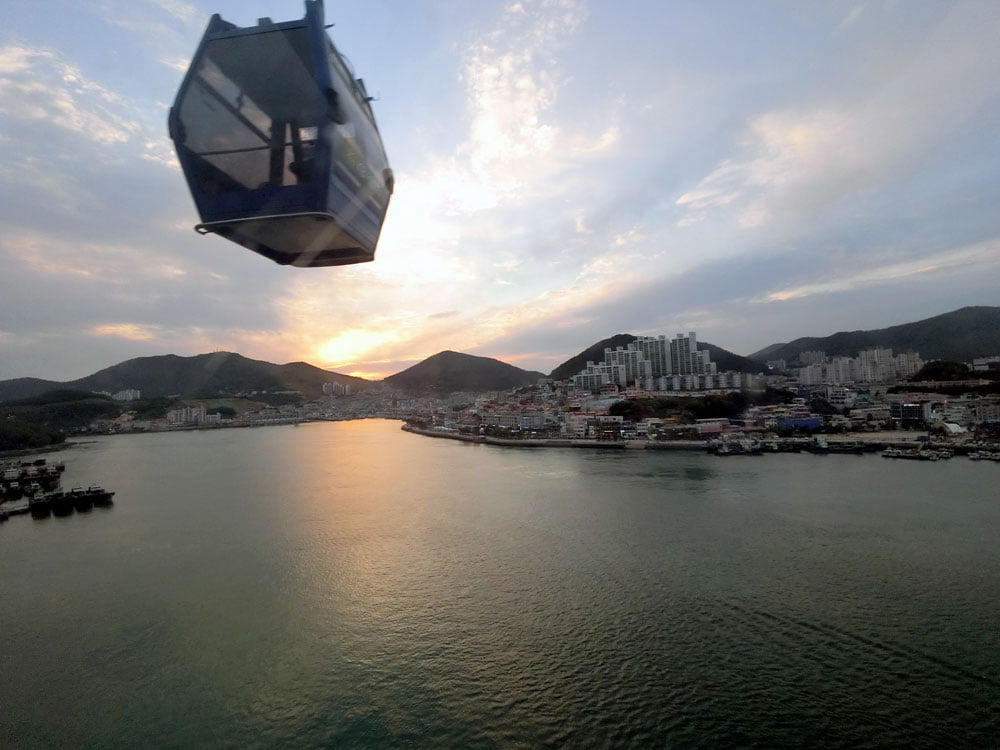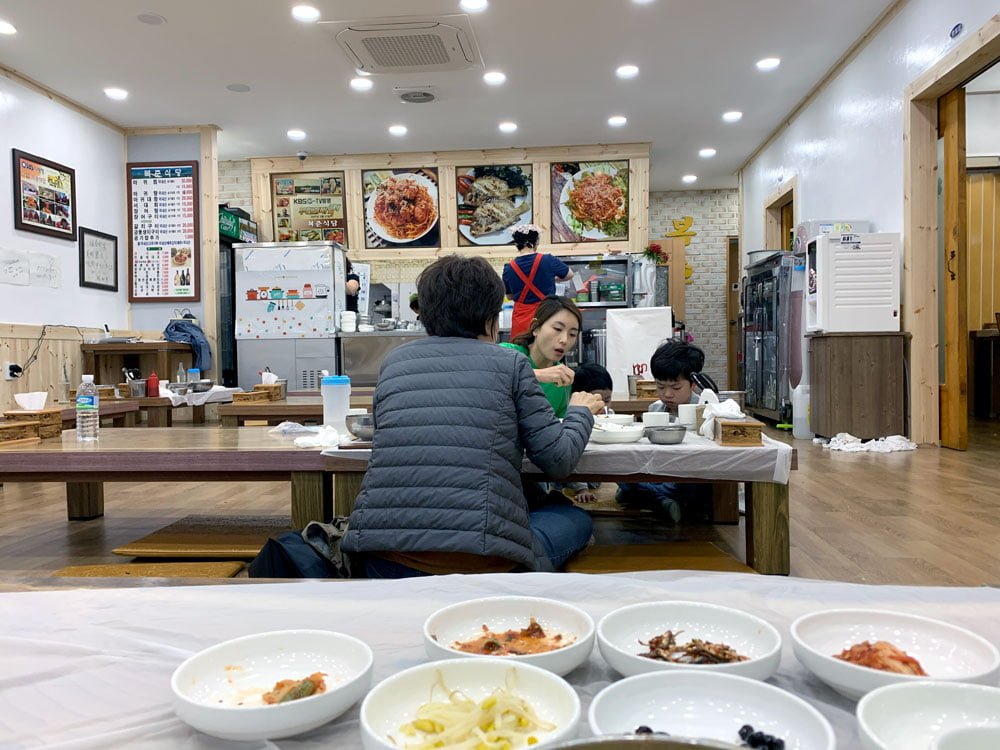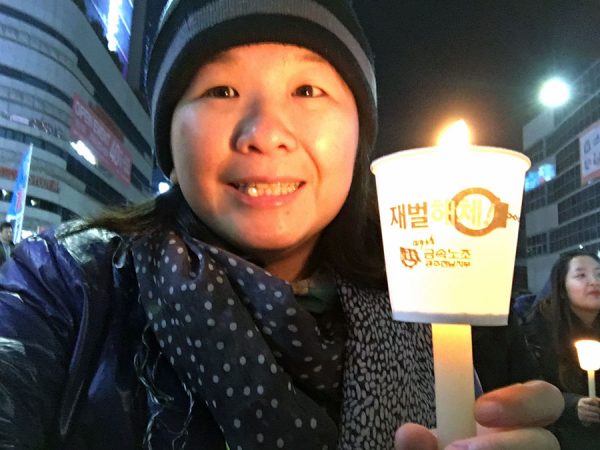Last Updated on 5 July, 2024
On this trip to Busan and the southern region of South Korea Jeollanam, I spent 2 days exploring Suncheon, and also decided to take a day trip to Yeosu 여수 which is about 30-45 mins away to see what I could find there. Yeosu translates as Beautiful Water and is a lovely little coastal town that makes for a nice day of entertainment for those keen to explore Jeollanam. I didn’t plan very much beforehand and found most of these things on the fly – here’s my list of things to do in Yeosu and some helpful info on how to get around Yeosu solo with public transport and directions on Naver Maps.
Things to do in Yeosu
Yeosu Ocean Railbike 여수해양레일바이크
I did my first railbike in Taiwan and it was quite fun so I was quite psyched to get on the railbike here in Yeosu as well. Located by the sea, the Yeosu Ocean Railbike offers some pretty spectacular views of the Yeosu coastline along 3.5km of railway track.
The one big problem is that you need a minimum of 2pax to ride this railbike. Unlike the Taiwan one where they assign you to a car, solo travellers have to make their own friends if they want to ride the railbike as it is not quite possible to pedal on your own. So ultimately, I didn’t manage to ride the railbike, but I did take a stroll along the stretch until I hit the tunnel area.

 Railbike view that you can enjoy as you pedal
Railbike view that you can enjoy as you pedal
Yeosu Ocean Railbike Info
여수해양레일바이크 yeosu haeyang leil baikeu [Naver Maps]
Opening Hours: 9am – 6pm (5pm in winter from Nov – Feb)
Cost: 26,000 KRW (2-seater), 31,000 KRW (3-seater), 36,000 KRW (4-seater)
How to get there: Take a taxi or take public bus 6 or 7 to Yeosu Ocean Railbike Bus Stop
Yeosu Ocean Railbike website (Korean only) – English details at KTO website
Yeosu Expo 여수엑스포
Yeosu became a more well-known location largely because of the Yeosu Expo in 2012 themed around protecting the ocean and climate change, and the reason for building most of the infrastructure and this massive pavilion. As with many of these one-time venues, these large buildings left behind seem a bit empty without the crowds, especially on a random weekday afternoon, but it is still quite fascinating to explore.
Other things in the area:
- Hanhwa Aqua Planet Yeosu – this aquarium is the 2nd largest in Korea, slightly smaller than its sister in Jeju Island and housing 2 beluga whales and baikal whales
- Sky Tower and Cafe Sky – these twin silos have been repurposed into a viewing tower (admission fee 2,000 KRW) with a cafe on top. I didn’t visit this, but it seems to be prettier in the evening/night
- Big O show – this is apparently the world’s largest light and water fountain show that takes place in the evenings except on Mondays (see performance schedule). I only walked by it in the afternoon so I didn’t see anything special then.
여수세계박람회 yeosu segyebaglamhoe [Naver Maps] How to get there: This is right across the road from the Yeosu Expo Train Station. I walked through here en route to Odongdo. Details at Yeosu Expo website.
Odong Island 오동도 (Odongdo)
I was looking to explore more of Korea’s offshore islands on this trip, so I was definitely keen to visit Odongdo aka Odong Island (do = island). This island is particularly famous for its abundant Camellias that turn the entire island a vibrant red when they are in bloom from November to April. Unfortunately for me I was there in June so I mostly had a tiny lush green island to explore.
The island is very easy to get to as you walk across a breakwater to get there. There is a shuttle bus or dongbaek train if you prefer not to walk.


There’s not that much to do on the island but enjoy a pleasant walk and some nature. I found a lighthouse that gave me a nice view of the island and surroundings, and some camellia tea was on sale, but I didn’t do much else here but enjoy the scenery for about 1.5-2 hours.

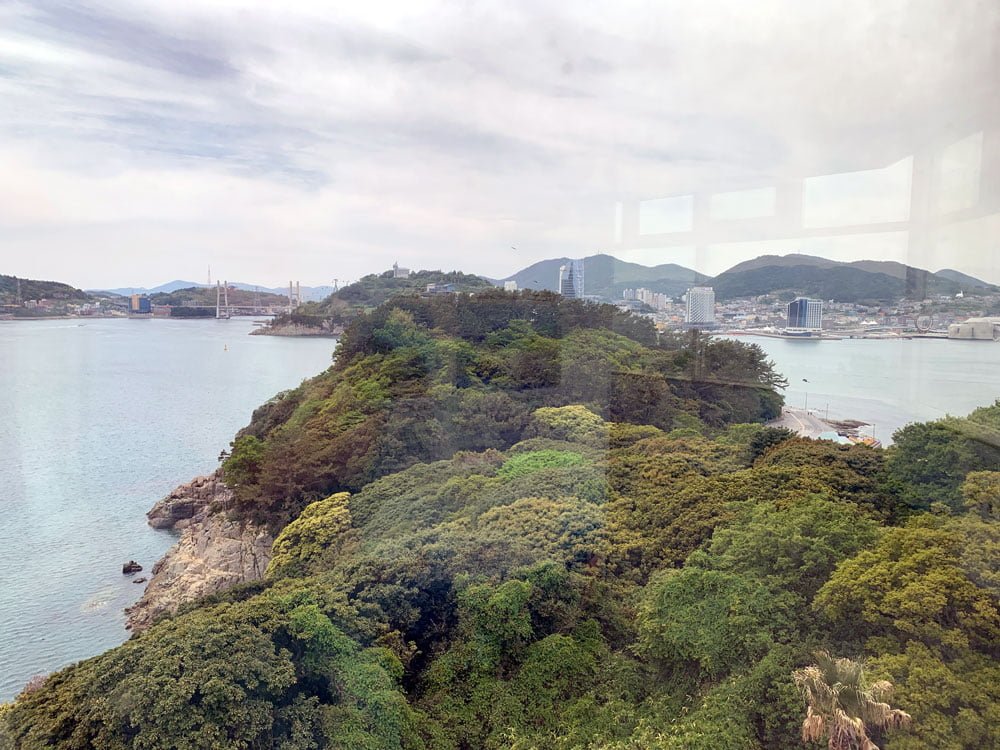
Odong Island Info
오동도 Odongo [Naver Maps]
Cost: There is a ticket machine on the bridge where I was asked to purchase a 1,000 KRW ticket to enter the park, but honestly it’s pretty easy to walk by without anyone noticing. From the little that I could understand from the guy helping me at the machine, the ticket was only 1-way, but I didn’t have to buy a ticket on the way back.
How to get there: Take bus 2, 68, 76 or 333 to the Odong Entrance bus stop. 2 and 333 will get you to the Yeosu Expo Train Station, while 333 will also get you to the Intercity Bus Terminal.
Odongdo Island on Yeosu Tourism website
Yi Sun Shin Plaza 이순신 광장 / Jungang
Before the Expo, Yeosu was known for its place in Korea’s maritime history. Admiral Yi Sun Shin is arguably one of the most famous naval commanders in South Korean history – you can see his statue in Gwanghwamun Square in Seoul as well. He was the one who led and won that epic battle where he was outnumbered by the Japanese navy at least 10x with just 12 Korean-style battleships (known as Turtle Ships or Geobukseon 거북선).
It was here in Yeosu that Admiral Yi had his headquarters set up in a place called Jinnamgwan Hall 진남관 (closed till 2020 for restoration) which is also the largest single-storey wooden structure in South Korea. It’s not far from the plaza where you can see his statue.
I walked towards the coast and found a full-size replica of one of these famous Turtle Ships which was first built here in a Yeosu shipbuilding yard. This replica is like a mini museum of sorts that you can enter and explore the interior to learn more about the design and what life on these ships was like.
이순신 광장 yi-sun-sin gwangjang [Naver Maps] to get there: Most buses will pass through Jungang so there are plenty of options. Also, it’s free!
Hyangiram Hermitage 향일암
One of four Buddhist hermitages in all of South Korea, Hyangiram dates back to the 7th century and is located in a rather remote part on the south-eastern tip of Dolsan Island. It’s built on the side of the Geumosan Mountain and a very popular place to catch the sunrise, especially on New Year’s Day.
My experience with Buddhist culture is that they are a little masochistic and like to build their temples in hard to access areas. I’m not sure if there’s some moral about the journey that counts more than the destination, but be prepared to do a lot of climbing up steep slopes and staircases here. From the bus stop to the entrance involves one long steep slope where you can pop into a cafe or two for refreshments.

After the entrance where you pay the entrance fee, it’s more staircases to climb, some through forested pathways, others built into the mountain – narrow openings in between slabs of rock. The view of the sea is pretty incredible of course, I went in the afternoon but I imagine mornings must be absolutely stunning.


Hyangiram Hermitage info
대한불 hyang-il-am [Naver Maps]
Cost: An entry ticket to Hyangiram costs 2,000 KRW (~S$2.40).
How to get there: Take bus 111 or 113 from the Yeosu Expo Station (they have a handy bus timing listing for you at the tourist info centre) or Jungang all the way to the end. You’ll pass through lots of countryside and the bus journey will take you about 45 minutes in total. You can also take bus 116.
Hyangiram on Yeosu Tourism website
Yeosu Marine Cable Car 여수 해상케이블카
One of the highlights of visiting Yeosu is to take the cable car that runs between Jasan Park 자산공원 (at the entrance to Odongdo) and Dolsan Park 돌산공원 (at the northern tip of Dolsando/Dolsan Island) and alongside the Geobukseon bridge.
I took the cable car on the way back from Hyangiram, so I just bought a one-way trip from Dolsan Park to Jasan Park, and was pretty lucky to catch the sunset along the way.



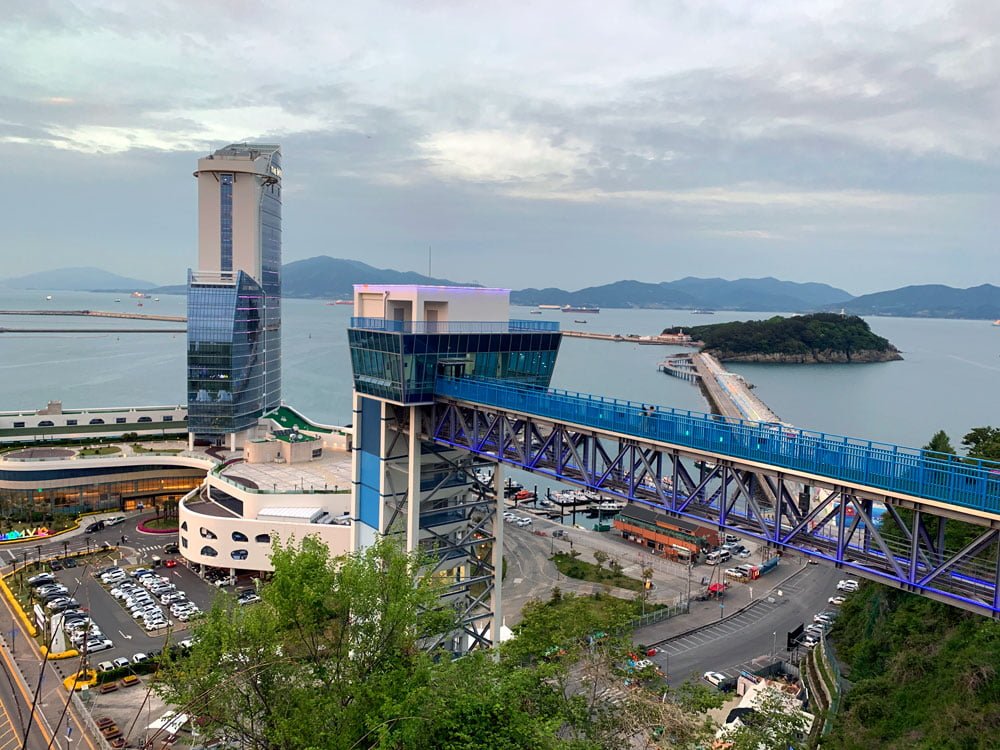

Yeosu Cable Car Info
여수 해상케이블카 yeosu haesang keibeulka [Naver maps for Dolson Park]
Opening Hours: 9am – 930pm (opens 10am in Winter Dec to Mar, ticketing ends at 9pm)
Cost: For standard cabins, a 1-way ticket costs 12,000 KRW (~S$14), while a round-trip ticket costs 15,000 KRW (~S$18). The round-trip ticket is definitely more value for money. The crystal cabins with the glass floors cost more, and you can also save by getting package tickets if you want to see the Fantasy World Media Art Museum as well.
How to get there: Take bus 2, 68, 76 or 333 to the Odong Entrance bus stop to get to Jasan Park. 2 and 333 will get you to the Yeosu Expo Train Station, while 333 will also get you to the Intercity Bus Terminal.
Eat: Angler Fish Stew 아귀찜 (Aguitang)
I decided to grab dinner before I went back to Suncheon, and looked up a bunch of listings in the Jungang area. The original spot I wanted to visit was closed, so I randomly picked this restaurant called Bok Chun Restaurant 복춘식당 (Bokchun Sikdang) which turned out to have over 40 years of experience according to this naver review.
Here’s a tip for solo diners when you don’t speak the language: if you spot any English menus outside, take a picture of the menu so you have something to point to in case they don’t have any English translations inside. Yeosu has more translations because of the Expo previously, but you’ll have to rely on luck or pictures in many other places in Korea.
The menu isn’t extensive, and I was particularly curious about the Angler Fish Stew or A-gui-tang 아귀찜 so that’s what I ordered. It turned out to be pretty good – I wouldn’t have known it was angler fish if you no one had told me about it. This restaurant is also famous for Seodaehoe 서대회 or Tonguefish Sashimi.
I would have liked to try more of Yeosu’s speciality foods, like Soy sauce braised raw crab Ganjang Gejang, but the peril of travelling solo and having a small appetite means having to pick and choose your meals! These Yeosu posts by the Real Seoul look like pretty decent recommendations.
Bok Chun Sik Dang info
복춘식당 Bokchun Sikdang
Opening Hours: 9am – 830pm
Cost: Aguitang cost 10,000 KRW (~S$12)
Location: 5-8 Gyodongnam 1-gil, Jungang-dong 전남 여수시 교동 남자 1길 5-8 [Naver Maps]
How to get from Suncheon to Yeosu
Suncheon to Yeosu by train
The train from Suncheon station to Yeosu Expo station takes about 25 minutes. I recommend taking the train over the bus because it’s quicker, and also because it takes you to the Expo area which is closer to more Yeosu attractions than the town centre. Price ranges from 2,600 KRW (~S$3) by the Mugunghwa to 8,400 KRW (~S$9.50) by KTX.
Suncheon to Yeosu by Intercity Bus
The intercity bus from Suncheon to Yeosu takes about 45 minutes and a one-way ticket cost me 4,500 KRW. Note that the Yeosu bus station is in Orim-dong which is the official town centre, so you will need to take a taxi or public bus to get to the Expo and Jungang areas.
From Busan/Seoul
If you’re based in Busan, the bus from Sasang Station to Yeosu takes about 2.5-3 hours in total. The bus is a more direct and faster option than the train.
If you are coming from Seoul, you can take the KTX from Yongsan to Yeosu Expo on the Jeolla Line. The journey takes about 3+ hours. If you take the bus, it will take 5.5-6 hours.
Getting around Yeosu by public transport
Maps: Naver Maps
I usually rely heavily on Google Maps, but for South Korea, my go-to maps app is Naver Maps which not only gives you more accurate locations for Korea, it also gives you bus and train directions and timings, very helpful for the solo indie traveller trying to get around by public transport.
There is an English map interface, but sometimes the spelling/spaces of the English names aren’t always accurate, so having the Hangul name on hand to search is also useful. If you search for a restaurant, it automatically brings up reviews and even menus + prices, but it’s all in Korean. In this guide I’ll include the Korean names that you can use to search.
Download Naver Mapsfrom Apple App Store or Google Play store. You’ll need to sign up for a Naver account to use it but it’s free and easy to do, I highly recommend this for navigating in Korea.
Buses: T-Money Transportation Card
Pick up a T-Money card (2,500 KTW or S$3) at the for all your public transport needs – it makes it quick and easy to pay fares by tapping on the terminals at the front and rear entrances of buses and not having to constantly queue for tickets. You can even use it to pay for some taxi fares and convenience stores. In addition, the transportation card rate is usually slightly cheaper than the cash rate (about 100 KRW cheaper for adults) and you can get transfer discounts within half an hour (make sure to tap out at the exit for buses).
From what I can tell, both T-Money and Cashbee can be used throughout most of Korea, though T-Money is the most widely used, and Cashbee cards can be found mostly in Busan. One thing to note is that it seems you can only top up your card using cash only, both at the machines in the subway and at the convenience stores. More info here.
I bought a T-Money Korea Tour Card (4,000 KRW or S$4.60) that I purchased from the convenience store at the airport light rail transfer station. On top of the standard T-Money functions, it also offers other attraction, tour and shopping discounts, though I didn’t really make use of them. The good news is your T-Money card doesn’t expire so you can always reuse on future trips.
They launched a Namhaean Coast Korean Tour Card in 2019 that offers discounts on some of the places in Suncheon that I visited, as well as Busan, Yeosu, Tongyeong and Geoje, but it wasn’t available when I took this trip, but something you can consider.
For Android users, there is even a mobile phone version that you can use to make payments and top up with your credit card.
Check out the KTO site for a detailed rundown on the use of transportation cards in Korea.
Taxis: Kakao T Rideshare app
Sometimes buses aren’t the most efficient way to get around, especially in more remote areas. Kakao T is a really useful app where you can easily book a taxi. You can key in the information or set location via map so you won’t even have to worry about communication issues with the driver and you can track the route on your phone. It has a whole host of functions but I’ve really only used it for getting a taxi.
In terms of making payment, you can select Pay Direct to Driver (because you won’t be able to link your credit card directly without a Korean ID) when you make your booking. Most taxis take credit card as well, so you don’t have to worry about handling cash either – my Wise card [referral link] worked in most places all across Korea and I liked how easy it was to .
Download Kakao T from Apple App Store or Google Play store. You’ll need to download Kakao Talk and sign up for a free Kakao account to use, and you can use your own phone number (no need Korean number) as well to verify the account.
Roaming Data
I cannot stress how important it is to have data when trying to navigate in South Korea as you will need it for maps and translations, or trying to hail a rideshare. Get an unlimited data plan if you can so you don’t have to worry about using up data.
Data isn’t that expensive and there are plenty of websites offering different plans and ways to connect. See what works best for you, but here’s a quick run-down of what’s available:
- eSIM cards: My current go-to option for data overseas because you can easily install a data plan without removing your existing SIM card, have access the moment you touch down and no need to worry about where to pick up the card. Cons are that you don’t usually have a Korean phone number which may be an issue with making reservations/taxi drivers trying to call you, but it’s not a big issue in my opinion. Here’s the unlimited data Frewie eSIM I used on my latest 12-day trip to Jeju from Klook [affiliate link] that cost about S$38 or you can check out eSIM sites like Airalo [affiliate link].
- Prepaid SIM card: SIM cards are usually the cheapest option with a variety of plans/time-periods available and you can often pick up in both Korea (mobile stores and at the airport), or Changi Recommends has several Korean SIM card options that you can pick up at the Singapore airport. I’d get this if I was on a budget or needed a local Korean number, but check as not all SIM cards offer domestic calls/texts. Klook has a KT-Olleh 4G LTE unlimited data-only SIM card [affiliate link] that allows you to top up 11,000 KRW (about S$11) for some voice calls.
- Portable Wifi Device: Good if you are more security conscious and have multiple devices like tablets and laptops to connect, or you’re travelling in a group and looking to save money but can be cumbersome because it’s an additional device to carry around that needs to be charged, and you have to pickup/return usually at the airport. On this trip in Suncheon I rented a KT-Olleh portable wifi device (unlimited data) from Klook [affiliate link] for 9 days that cost S$27.45 because I had some credits and there was a sale.
Where to stay in Yeosu
I took a day trip from Suncheon and stayed in Baguni Hostel [booking.com affiliate link] which is between the bus terminal and the train station. Read more about Baguni Hostel and my time in Suncheon. On hindsight, I think staying one night in Yeosu would have been good as a lot of Yeosu’s light attractions are best seen at night.

but I had a look at accommodation options around Yeosu, and if I stayed in Yeosu these are places I probably would have considered. All links below are booking.com affiliate links.
- Backpackers in Yeosu – 4-bed dorms from S$20, double rooms from S$40. Closer to the Expo Station, it looks like a convenient and nicely designed hostel
- 1004 Hostel Guesthouse – 4-bed dorms from S$20, family rooms from S$75. Located somewhere between the other 2 listings, the facilities of this hostel look pretty good
- K Grand Hostel Yeosu – single room with attached bathroom S$40. This is quite a cheap private accommodation option, and even more affordable for those travelling in pairs or small groups as you can split the cost of the room. Closer to the Jungang area
Have you been to Yeosu? Tell me what I missed in the comments. If you are travelling around the Jeollanam region, why not check out Suncheon or Gwangju as well?



